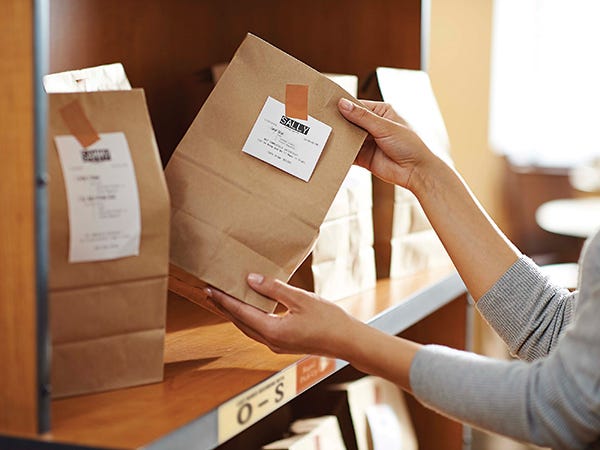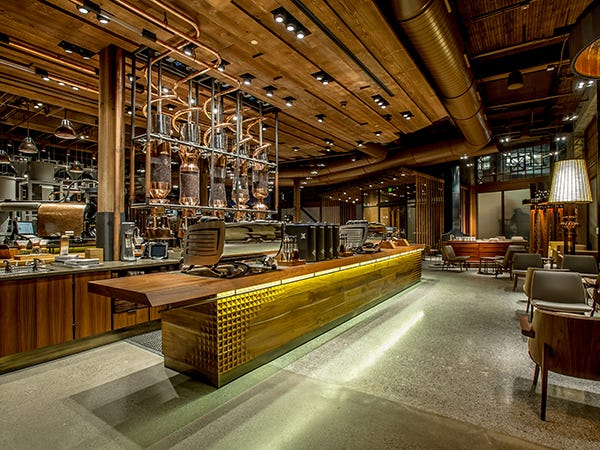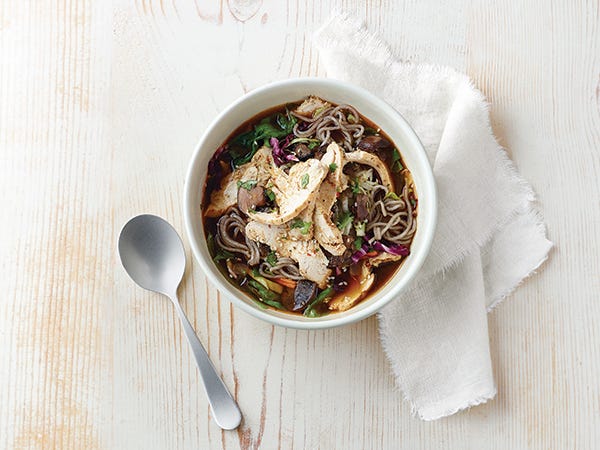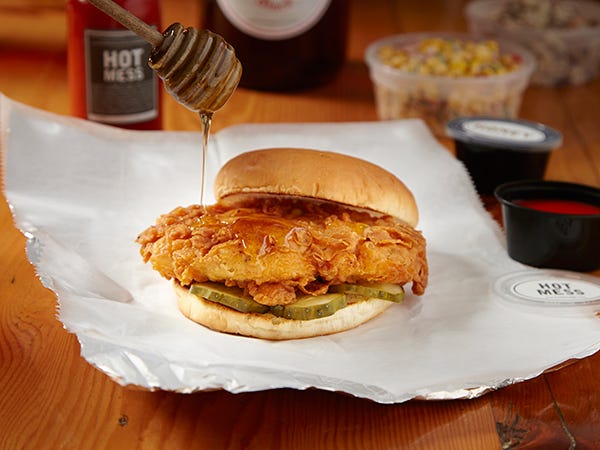7 restaurant trends every FSD should know
Anyone who’s been in the on-site business during the last two centuries is painfully aware that a consumer will opt for an off-site place to eat if a foodservice director can’t match what’s available on the street.
There might have been a time when non-commercial foodservice actually boasted a captive market. We hear, too, that men once wore powdered wigs, and bustles were the height of fashion for women. Anyone who’s been in the on-site business during the last two centuries is painfully aware that a consumer will opt for an off-site place to eat if a foodservice director can’t match what’s available on the street. With that in mind, FoodService Director presents this look at the trends reshaping the restaurant market. They’re strategies the competition is using to steal your customers, unless you beat them to the punch.

1. Small is the new big: the shrinking restaurant
It’s almost a natural law of the business. Smaller restaurants are more efficient, so why not maximize profits by shrinking a concept? But that’s only one reason why chains are taking the approach to extremes and planning a new generation of miniature outlets. Small, it seems, is suddenly a big thing.
Starbucks is close to opening the first of its new express stores, which feature a “concentrated” menu and few frills, such as seats or bathrooms, the company says.
At the same time, Chipotle is scouting for the first of its minis, described by CFO Paul Hartung as “a really, really small” place to grab a burrito and perhaps a limited number of other items. Just don’t expect to sit and eat.
Denny’s calls its pocket-size version The Den, which features a different menu in a dramatically scaled-down footprint. It’s already finding favor in non-traditional sites such as college campuses. Ten units are open, and management has designated the compact format as a growth vehicle.
The list goes on and on. BJ’s Restaurants, whose national chain of casual, craft beer-serving restaurants had typically measured 8,500 square feet, is trimming the floor plan of new units by 1,100 square feet. The smaller restaurants cost $1 million less to build, yet can handle as many customers and generate as much in profits as the larger stores. In addition to the savings in construction, “our labor and controllable costs will be more efficient, as well,” CEO Greg Trojan explained to investors when he revealed the new format last year.
Red Robin, a full-service restaurant with a big presence in malls, is shoehorning a smaller variation called Burger Works into urban locations. Ditto for Famous Dave’s, which calls its little brother the Famous Dave’s BBQ Shack. The units measure about 3,000 square feet, compared with the 8,000-square-foot footprint of conventional stores.
A button-size place can slip into more locations. For example, Starbucks’ express stores will enable the company to hit its ambitious goal of adding 3,500 outlets by 2017 to the 21,366 it had in operation at the end of 2014.
Non-commercial operators may not be familiar with expansion on that scale, but they are certainly no strangers to the intercept strategy that also is driving development of the express stores. Starbucks plans to put the units where urban patrons are walking to or from work, their homes or a movie.
“The evolution of our store experience is a direct reflection of how our customers are interested in both accessibility to the brand as well as speed and convenience,” said Cliff Burrows, president of Starbucks’ U.S., Americas and Teavana divisions.
Chipotle says it can cut the seating area from the floor plans of some stores because about two-thirds of its transactions are now to-go. Convenience is the hook for takeout customers, and a smaller store helps in that regard. There’s also less concern about blurring the brand’s perception because Chipotle’s core characteristics are now familiar to the public, Hartung said.
Technology also is firing the shrink ray for restaurants to reduce their footprint With mobile technology shifting a portion of cashier and counter-ordering functions to customers’ smartphones, why does so much space have to be devoted to those outmoded in-store processes?
About 8 percent of Panera Bread’s sales were being generated by digital orders by the end of 2015, according to CEO Ron Shaich. “That rate of digital adoption is more than double where we were at the end of the second quarter,” he told financial analysts. Not surprisingly, Panera is shifting some functions out of stores and into stripped-down delivery kitchens that function like commissaries.
Starbucks has described its express units as essentially production/pick-up hybrids where patrons can retrieve the lattes and espressos they’ve ordered and paid for via smartphone.
BJ’s executives have observed that employees of its full-service units like the smaller facilities because there’s less ground to cover, leaving more time and effort to spend with guests. “The fact is, smaller restaurants are a little bit easier to run,” Trojan acknowledged to investors.
2. Simplified menus
A persistent challenge for the restaurant industry has been snagging traffic, which still falls about 11 percentage points short of pre-Great Recession levels, according to Black Box Intelligence, a Dallas-based financial data company. The knee-jerk reaction was to embrace any menu lure that seemed to work for someone else, leading to bloated rosters of far afield products such as bacon milkshakes, cheeseburger pizzas and waffle tacos.
Now the pendulum is swinging the other way, as customers demonstrate a marked preference for quality over breadth of choice. Fewer menu items means more turnover of ingredients and fresher supplies, along with fewer preparations for the kitchen crew to master. Slimming down a menu also avoids the anxiety that McDonald’s detected in customers at the drive-thru. They couldn’t sort through all the options before they heard a voice pressing them for their orders.
The burger giant has pledged to simplify its menu in hopes of winning back the public’s favor. It’s not just a matter of cutting selections, explained Peter Benson, McDonald’s chief administrative officer. “It’s actually making the menu easier for the customer to order, and making the menu easier for our crew and managers to execute,” Benson said to investors.
Part of that is trimming slow-movers, part of it is not listing everything you offer and part of it is displaying items in an uncluttered, easier-to-navigate way, he said.
McDonald’s is hardly alone in that quest. After a strong recent quarter, Burger King boasted not only about its sales results but how they were engineered. Customer lures were concocted using what was already in the kitchen, requiring only five new SKUs to be shipped to stores.
Shearing choices for today’s fickle consumers might appear to be a dicey undertaking, but the Friendly’s family-restaurant chain found the risk to be grossly overstated. Its menu had grown larger than The Cheesecake Factory’s, undeniably one of the most extensive bills of fare in the business. But an analysis revealed that 65 percent of the selections accounted for only 2.6 percent of sales.
Besides, say advocates of “less is more,” look at the success bare-bones menus have enjoyed. In-N-Out Burger, whose restaurant volumes exceed McDonald’s, still has only about five items, excluding sodas. That compares to about 145 items for McDonald’s, which has added about 85 products since 2007, according to financial analysts.

3. Line busting
A line out the door is a sign of a restaurant’s success, but it’s one most operators would prefer to dodge today. They’re going to great lengths to avoid creating queues and promise “frictionless service,” a smooth-yet-speedy way for customers to order, pay and receive meals without delays often with the help of technology.
Quick-service and fast-casual restaurateurs have dubbed the effort “line busting,” or taking orders in ways to prevent customers being stacked up even at the height of the breakfast, lunch and dinner rushes.
The forms it takes are as varied as the places that practice it. Most converts combine several techniques, most of which play off ordering ahead of time. The term most often is applied to the use of handheld ordering devices on which staffers can take orders before the customer gets to the cash station, but that’s hardly the only option being explored.
Just look at Panera Bread. The company is re-engineering fundamental service procedures through a sweeping operational overhaul known internally as Panera 2.0. After a unit is completely rejiggered, patrons can order and pay for meals via mobile phones, tablets, in-store kiosks or, for the sake of traditionalists, at the counter. Patrons who order ahead via phone, tablet or computer are given a time and the designation of a slot on a cabinet near the entrance where they’ll find their orders waiting for them. Even if the store is packed, they never have to wait on line. They just grab the bag and go.
Chick-fil-A has the twist of bringing orders out to customers’ cars so a mom with a minivan full of kids doesn’t have to shepherd the clan inside and keep them occupied until the payment and food handover are completed.
Pizza Hut is about to test new in-car capabilities that enable the driver or a passenger to order and pay for food via functions on the navigation screen. The system can alert the store when the car is approaching, raising the possibility of having the item waiting at a drive-thru or delivered to a special parking space. Apple is developing a similar car-based system called AppleCar, though a restaurant partner has yet to be named.
The benefits can be considerable. The lack of a line can translate into fewer customers walking past the queue to get food someplace where the wait is shorter. Self-ordering and remote payment, all handled by the guest without staff involvement, means more orders can be processed in a shorter time frame. A faster pass-through translates into more meals being served when demand is at a
peak, a payback Chipotle cites as a key reason for double-digit sales growth this year.
But busting a line by providing alternate ordering routes is not without its challenges. The kitchen often struggles to keep up with peak mealtime volumes. Now that influx of orders can be intensified, and they have to be distributed to more channels, sometimes each with its own level and type of packaging.

4. Commissary comeback
Commissary had become a dirty word in the restaurant business, a link in the supply chain that all but screamed, “Nothing fresh here!” to consumers demanding just-harvested ingredients cooked a la minute to each patron’s exacting specifications. Places supplied by a central kitchen could only hope to exorcise the bad juju by slipping a few “made on-premise” claims onto the menu.
But now the commissary is making a comeback, albeit with a new moniker. Indeed, several New Age concepts are even crowing about it, Starbucks being the prime example.
The cafe king is touting its new Starbucks Reserve Roastery & Tasting Room as a shrine to better coffee, where the brand could “take our customers literally on a magic carpet ride,” in the words of CEO Howard Schultz. It features areas inside for coffee lovers to sample the best coffees offered by the chain and to talk with some of the java experts on Starbucks staff. But it’s essentially a commissary, roasting beans to supply 1,200 other stores worldwide. The beans also are being shipped directly to consumers for at-home brewing within 48 hours of being roasted.
The Roastery is located just blocks away from Starbucks’ original store at Seattle’s Pike Place Market, and more are planned. “We are going to be building more roasteries in cities around the world,” Schultz told shareholders in mid-March.
But that’s not Starbucks’ only resurrection of the commissary model. A more traditional hub-and-spoke set-up is being developed to supply Starbucks stores with pastries and other baked goods from La Boulange bakeries—in effect using them as commissaries for the coffee shops.
Starbucks doesn’t hide the fact that the La Boulange products aren’t baked on premise in its cafes, but it doesn’t crow about it, either. The promotional slogan is, “Served warm at your local Starbucks.” Starbucks bought La Boulange for $100 million in mid-2013, specifically to have the concept serve as a feeder to Starbucks-brand cafes.
The company says the strategy has worked brilliantly. For instance, a higher-quality La Boulange-prepared sandwich is outselling the version it replaced by about 29 percent, according to management.
Starbucks isn’t the only restaurant chain that’s using commissaries to sell directly to the public. Panera now has about 28 delivery hubs in operation specifically to fulfill catering orders, or what the bakery-cafe chain internally calls large delivery orders. Catering order-taking and fulfillment is being shifted to the hubs from traditional stores so that in-store service does not suffer. Panera “found that when retail operators focused on retail, when they did not have to serve two masters, they did a better job,” Panera CEO Ron Shaich explained to financial analysts.
Panera spent more than two years refining the hub concept. So far, Shaich said catering sales in areas that rely on the hubs are growing more quickly than big-order revenues that do not have that resource. He has said he also foresees the possibility of using the hubs to offer deliveries of smaller orders.

5. Retail-restaurant mash-ups
If the Twitterverse is correct, seismic waves could emanate from your local Taco Bell sometime in the next year or so. Fritos Corn Chips is going to lend its name to the Mexican chain for a new product called the Fritos Taco.
If that doesn’t sound like big news to you, put away your Yanni records and pick up a copy of “Coolness for Dummies.” One of the hotter marketing trends right now is borrowing a retail product’s name for a new menu offering. Taco Bell is the poster child: Its Doritos Locos Taco, with a shell made of the same material as Doritos snack chips, was one of its best-selling limited-time products ever. It also is testing a dessert and breakfast item called Cap’n Crunch Delights, a doughnut hole encrusted in Cap’n Crunch cereal.
McDonald’s, too, is dabbling in the field. As part of its push to regionalize menus, stores in the Chesapeake Bay area were mashing up Filet-O-Fish sandwiches with Old Bay, a staple flavoring for any fish lover in the area.
It is a reversal of the usual co-branding model, where consumer-packaged-goods companies license restaurant names to give character to their products. “Our focus with retail has been not to replicate what we do in the restaurant but to leverage the heritage of Chili’s,” Wyman Roberts, CEO of Chili’s parent Brinker International, told investors. “And we think there are more opportunities.”

6. The rebirth of comfort food
America’s infatuation with comfort food has brought such home-kitchen favorites as mac and cheese and meatballs back into vogue within restaurants, but grandma’s slow-simmered broths were somehow overlooked—until now. A trend that most observers trace back to the November opening of Chef Marco Canora’s Brodo in New York City already has touched menus from coast to coast and as far down the pricing spectrum as the fast-casual market.
The pioneer there, Panera, is hardly alone among the recent converts in positioning broths as an option for “those seeking more healthful menu items,” as CEO Ron Shaich explained in a financial presentation.
The broth is, after all, predominantly water. All four of Panera’s new broth bowls deliver less than 410 calories. Still, the sodium content of each is more than 1,300 milligrams.
The gads of gushing social-media comments about Brodo’s menu signature usually note the warming, rich taste and the relatively low price tag. Canora makes his broth from the bones of grass-fed cows and organic chickens.
Not every variation is inexpensive. For example, many places add ingredients such as dumplings or eggs for an upcharge. Pistola, an upscale Italian steak house in Los Angeles, offers a lamb consommé blended with aged Scotch. The cocktail sells for $22.
The broth spectrum has already been stretched wide. Restaurants are using all sorts of proteins, and even are bending the definition of broth by making some versions exclusively from bones, which technically makes the soup a stock, not a broth.
A clear advantage for the operator, other than the relatively low food cost, is the portability of the broth. It lends itself readily to takeout. Canora’s versions, for instance, are handed to customers in paper coffee cups.

7. Opening a new window to sales
Another Marco Canora-fueled trend that is picking up steam is the walk-up takeaway window. His Brodo is actually just a pass-through from the kitchen. The window occupies a cutout that formerly was an entranceway to Hearth, the restaurant that is next door to Brodo.
Chefs from coast to coast have realized the advantage of punching a hole in their restaurants’ walls and selling everything from crepes to fried chicken through the portal. At minimal cost, an eatery can add a sales outlet and pitch convenience to customers in a rush, a compelling proposition for lunch in particular.
The trend already is diversifying as chefs adopt that method of getting their specialties into more customers’ hands. Edible Canada at the Market, a restaurant in Vancouver that showcases its native nation’s fare, has used its takeout window to dole out dishes made with Canadian bacon, Little Duckers—doughnuts fried in duck fat—and various types of poutine.
Lillie’s Q, a popular barbecue joint in Chicago, is selling buckets of fried chicken a la KFC through the window it has dubbed the LQ Chicken Shack. The Square Rigger in Martha’s Vineyard similarly sells lobster rolls and clam chowder during the height of the tourism season.
About the Author
You May Also Like




.jpg?width=300&auto=webp&quality=80&disable=upscale)

